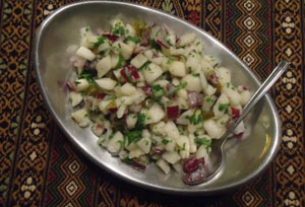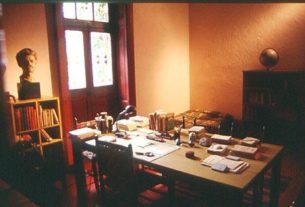History of Oaxaca
Part 1 – Pre-hispanic Era
See, also:
In three installments we will present a history of Oaxaca, its people, traditions and activities. We begin in this article with the pre-Hispanic era, to be followed by the colonial and the modern eras.
For more than three millennia prior to the Spanish invasion in 1521, there flourished in what is now the State of Oaxaca, sixteen ethnic groups, each with its language, customs and traditions existed in this paradise of mountains, valleys and tropical forests embroidered with the silver strands of rivers and streams: – from the Isthmus of Tehuantepec to the north and wes t– roughly to a line drawn from Veracruz to Acapulco; and from the Pacific to less than 100 kilometers from the Gulf of Mexico.
It was a quiet world by today’s standards, no vehicular traffic, no large animals. The people lived in small settlements nestled among the pristine fertility of land and sea. In their mountain enclaves and fertile valleys, the people planted corn, beans and chocolate, tomatoes, chiles, squash, pumpkin and gourds. There were pineapples, avocados and zapotes.
Primary sources of meat were the tepezcuintle, the turkey (which was domesticated early on), other fowl, deer, jabalí, armadillo and iguana. The rivers yielded freshwater varieties of marine life and fishing was an important occupation in the coastal areas where the fruits of the sea were diverse and abundant
Villages were basically extended family groups with a patriarchal form of communal authority. As the population grew, the political organization became more complex and sophisticated. Of the sixteen ethnias, two continued to expand in numbers and territory — the Mixtecs and the Zapotecs.
The Mixtecs inhabited the southern portions of what are now the states of Guerrero and Puebla, moving south and eastward through Huajuapám, Tlaxiaco and Nochixtlán, to the Pacific Coast around Pinotepa and Jamiltepec, eventually arriving in the Central Valley of Oaxaca. They were prolific expansionists and builders, leaving behind numerous as yet unexplored sites throughout the region.
In the Sierra Norte Valley and spreading to the Isthmus of Tehuantepec were the Zapotecs, astronomers who knew the use of the zero, and builders who leveled a mountain top to build the ceremonial center now called Monte Albán. Other important sites were built at Mitla, Lambityeco, Dainzu, Yagul, Zaachila and Guiéngola, all in various stages of excavation and restoration today. The Zapotec village of Teotitlán del Valle near the city of Oaxaca, known for its exquisite handwoven wool tapestries, is one of the oldest human settlements in México.
Sometime around the Thirteenth Century AD, the Mixtecs invaded the Central Valley, conquering the Zapotecs and adding their influence to the sites of Monte Albán and, most notably, Mitla, as well as influencing the language and customs. The other 14 groups were spread throughout the state and, while they did not achieve the numbers and influence attained by the Zapotecs and Mixtecs, they, nevertheless, represent an important factor in the historical and cultural panorama of Oaxaca.
From earliest times to the Conquest, the principal economic activities were agriculture, fishing, hunting and mining. Gold and silver were fashioned into exquisite adornments and in this activity the Mixtecs excelled, with their use of the lost wax process. Beautiful objects, for decoration and for everyday use, were elaborated from alabaster, turquoise, jadeite, marble, onyx and stone. Blessed with a tremendous variety of native clays, talented hands formed vessels and figures -utilitarian and objets d’art, natural and polychromed.
In the forests they hunted the plumes of the legendary quetzal. From nopal (kind of cactus), they carefully harvested the cochineal (tiny insect) from which they made the most precious red dye. From the rocks of the lonely Pacific coves, with infinite delicacy, they gathered small snails which were made to secrete their unique majestic purple dye, carefully returning them in order to preserve them for the next perilous visit.
The stately palm provided coconuts to refresh; its leaves to thatch houses built from its slender limbs; Petates – for sleeping, floor coverings, and hangings; tenates and baskets to store grains and small objects; hats to shade them from the tropic sun. Skins from the tigrillo, jaguar, deer, jabalí were used to keep out the cold of the mountain nights and for ceremonial dress.
The cotton native to the region, both the white and the naturally brown coyuchi (now called ‘ecological’), was spun into thread using a slender rod called a malacate, then handwoven on a backstrap loom into fine fabric, gleaming white, or with colorful designs created from cochineal, caracol, añil, and other plants.
The bountiful maguey provided the thorn with which to embroider and sew the garments, ixtle fiber for mecates (ropes), hamacas and other coarse fabrics. From the pencas of the maguey came the first fermentation, pulque, and the distillate mezcal. Gifts from the gods to chase the sorrows of the human condition.
Thousands of plants and herbs were utilized for medicines and physicks. Epidemics, measles, venereal diseases were unknown before The Conquest. It was essentially a healthy society, living a relatively peaceful existence, with occasional local conflicts and, increasingly, the campaigns of the Mixtecs.
While Oaxaca during this time was a remote area, it was by no means isolated. Commercial trade routes passed through from the north to the Mayan lands, Central and South America. Voyagers arrived and departed for trade and exploration the length of the coast, where the major ports were in what are today Salina Cruz, Astata, Huatulco, Puerto Angel, Pinotepa Nacional.
All the products of the region were traded locally and in the distant markets to the north, as well as in the Orient, Peru, Chile and Colombia. Much of the trade was barter. Depending on the era, shells, gold, silver, feathers and dyestuffs constituted legal tender. All travel was on foot or by sea. Men and women transported goods by foot on their heads or by means of tumplines. Local custom dictated the rules in the market place and the “international trade” enriched the local economy.
This was Oaxaca for thousands of years until, in the mid-fifteenth century AD, the winds of change began to blow down through the pass from the north, into the Central Valley of Huaxyácac. The Aztecs arrived, quickly conquered the local inhabitants and established their outpost on the Cerro del Fortín. They exacted tribute from the Oaxacans. Trade with Tenochtitlán and the north increased as a consequence, but the basic fabric of living was not yet greatly changed by the presence of the Aztecas. There they remained for half a century until a more powerful invader from across the eastern sea vanquished them and descended upon this peaceful land.
Next: life during the colonial era from 1521 until Independencía in 1821.
History of Oaxaca Part 2 – Colonial Era



Very interesting information , I am interested in a more detail information of the colonial era from 1521 to 1821. I am wonder if you can give a lead where to find it
Part two of same series is https://www.mexconnect.com/articles/1397-history-of-oaxaca-the-colonial-era/